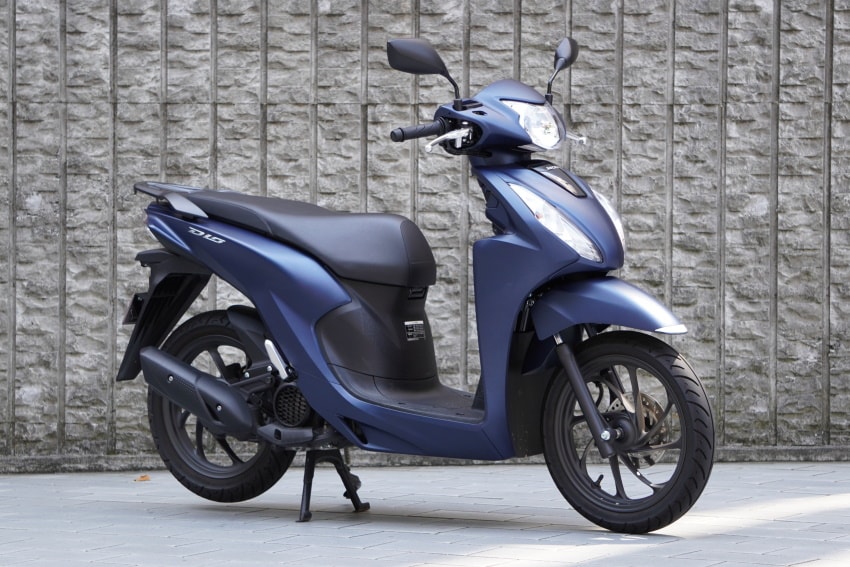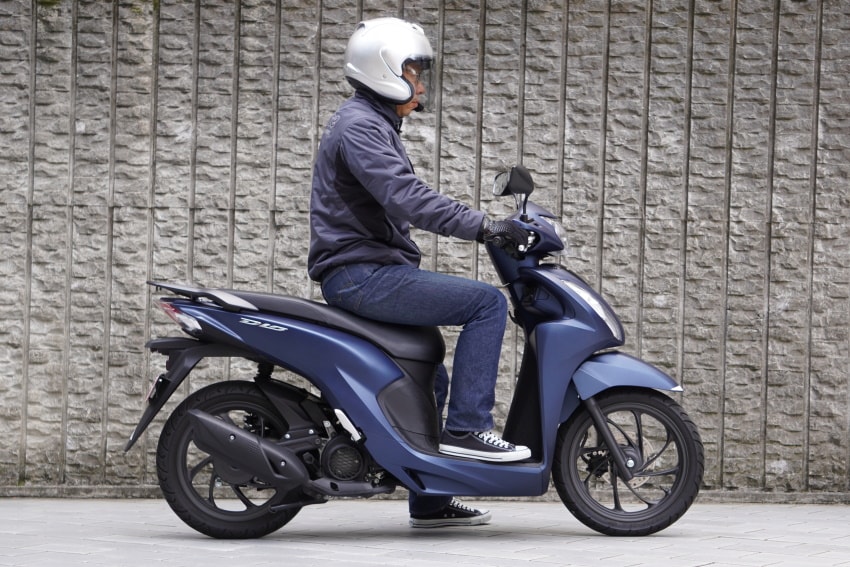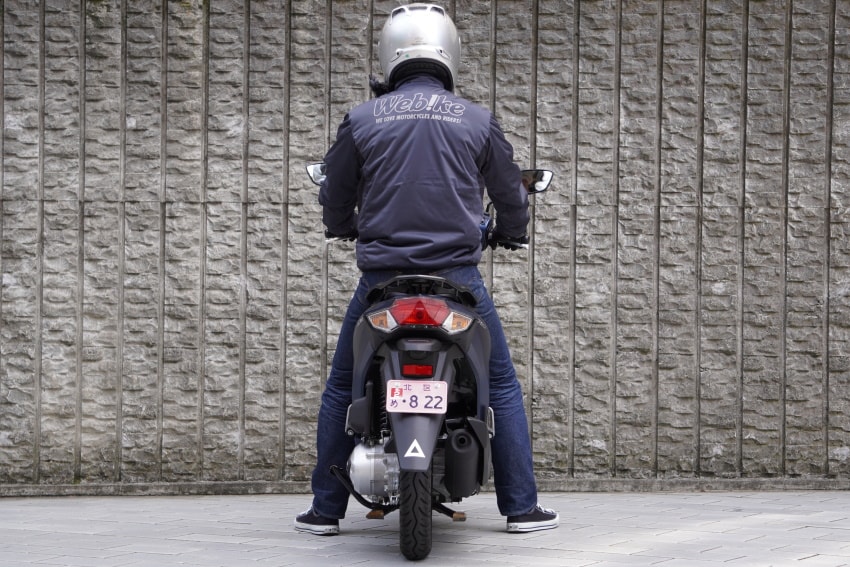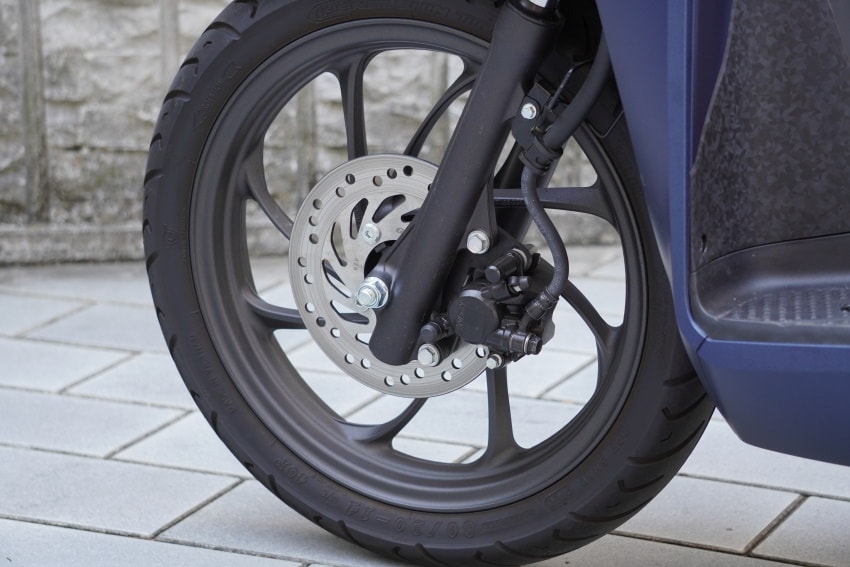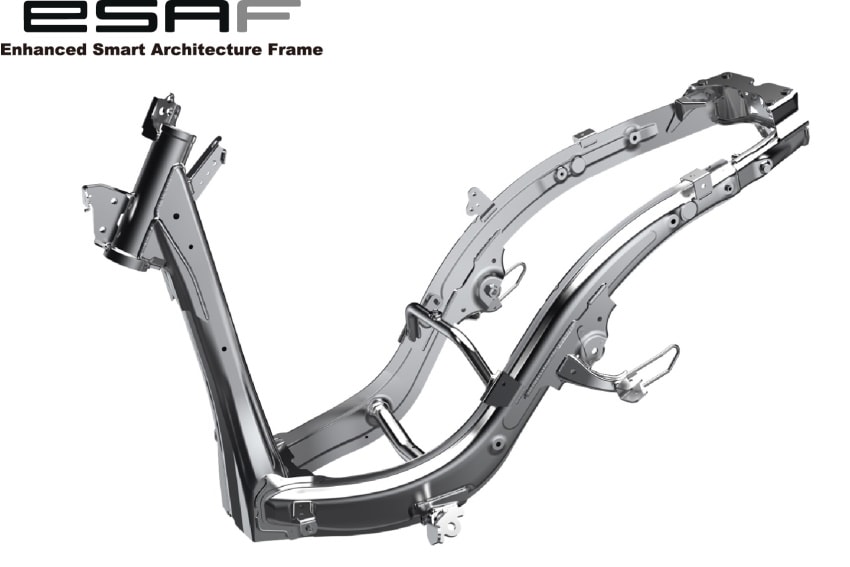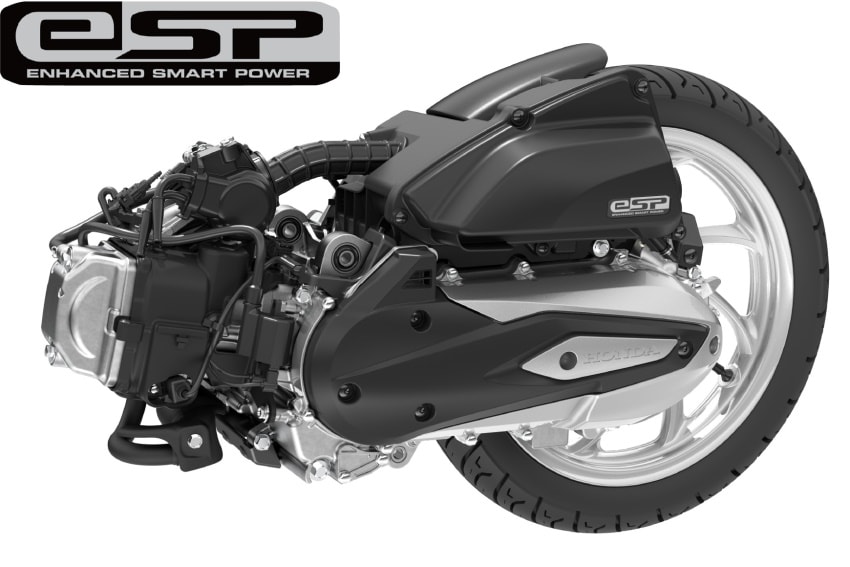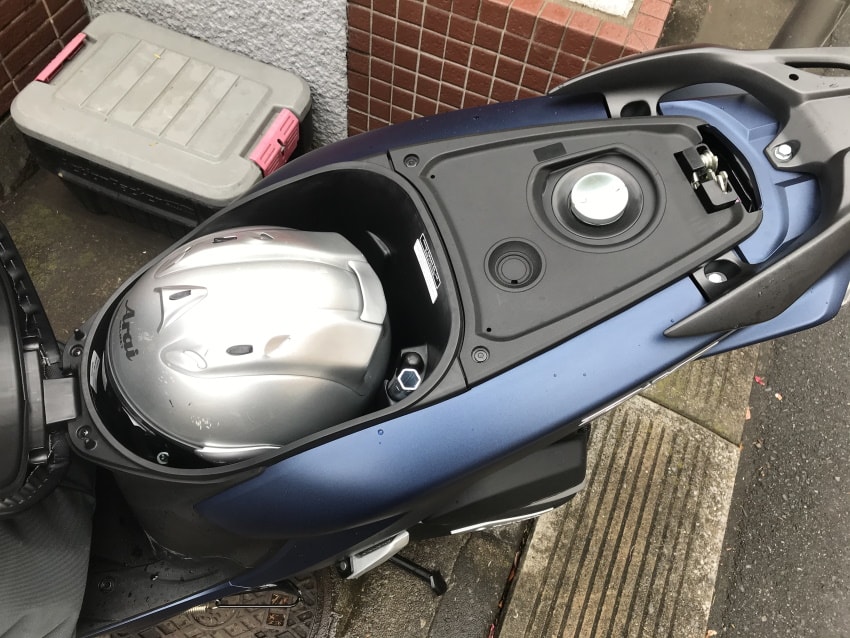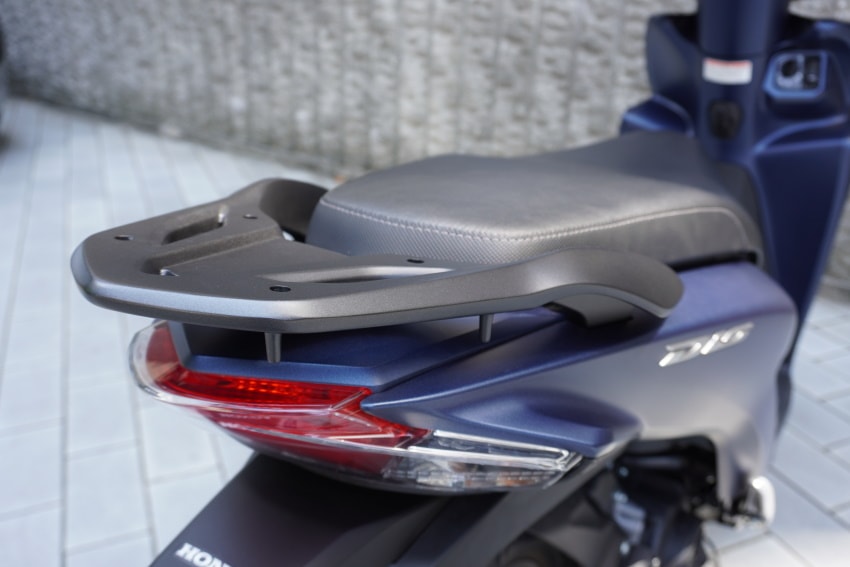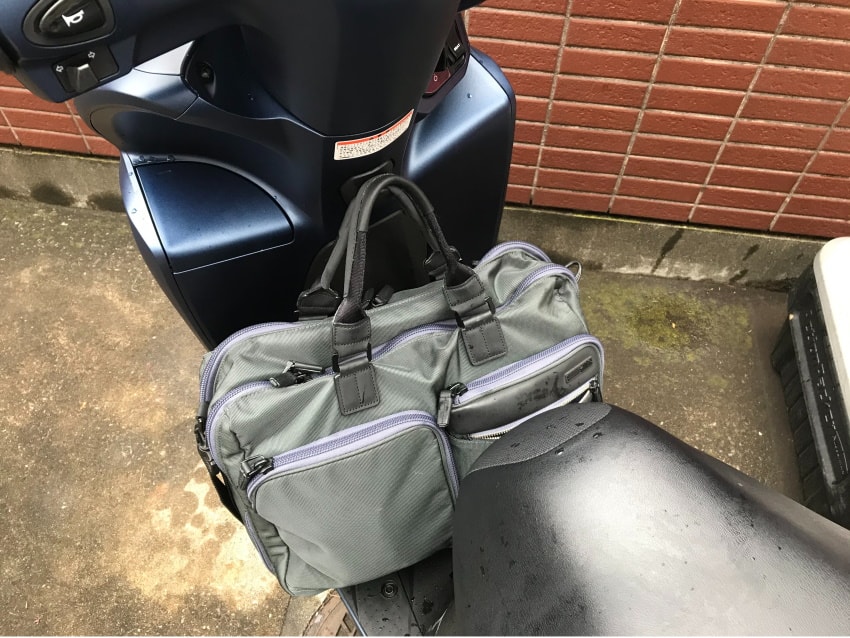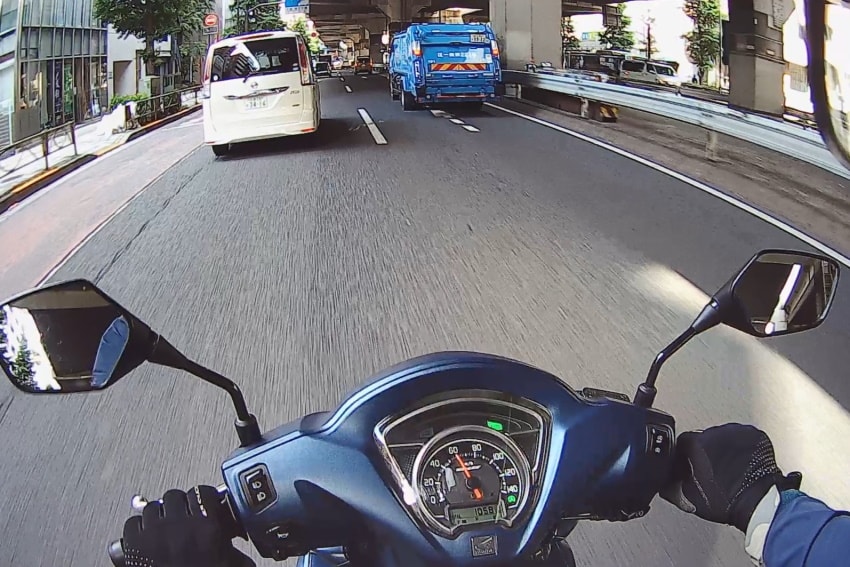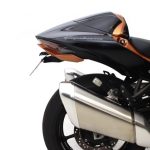Gin's commuting route is mainly National Highway Niyongrouk (Route 246). It's one of the busiest roads in the country and a great place for testing. It's a great environment for test ride!
Hello! This is Gin from Webike staff. I actually used Honda's Dio110 (Dio110) for commuting. I also test rode the new PCX and Lead 125 on the same route, so I will be reporting on this with comparisons to the PCX and Lead 125.
I usually commute to work on my Yamaha NMAX, a journey of about 30 km each way. About one third of the route is on stop-and-go roads with heavy traffic congestion and many slip-throughs, and two thirds is on fast-flowing national highway routes, mainly Route 246. I took a similar route to work on my Dio 110.
Benefit from large 14-inch wheels and a new frame for a calm ride
The Dio 110 is a two-class moped scooter with flat foot space and 14-inch tires front and rear, which is large for a scooter and is a mainstream style in Southeast Asia.
As typified by the READ 125, most Japanese scooters have 10 to 12-inch front and rear tires, which make them easy to maneuver and have a large met-in space under the seat, but their small wheel diameters make them vulnerable to rough roads and bumps.
The road conditions in Southeast Asia, the main market for the Dio 110 and other 14-inch front and rear commuters, are such that even in urban areas, there are many bumps and poor pavement, so a commuter with a large wheel system is required for high driving performance. In fact, when I was in Vietnam, I experienced the difference between the roadway and sidewalk and the unevenness of the road that suddenly appeared here and there, and I realized the necessity of a motorcycle with a large wheel diameter.
The Dio 110 has just undergone a full model change for the 2021 model year, with a new longer-stroke engine and a redesigned frame. It also features a new smart key.
The rider is 170cm tall and has a basic step-through type riding position. No tightness.
With a rider weight of 65kg, the footing is grounded to the heel. The seat has a slim impression.
My impression of the Dio 110 is that it feels like a motorcycle. Because the wheel diameter is large, the feeling of riding is similar to a motorcycle with gears. The handling is quicker and less like a scooter, but it is a calm handling.
Even when riding with the flow of vehicles on the main road of my commuting route, the body of the motorcycle looks very calm even if there are some ruts and bumps. It's not just the 14-inch wheels at the front and rear, but also Honda's newly developed frame design that provides flat space underfoot and increased body rigidity.
The front and rear wheels are 14 inches and feature the new 8-spoke design. Tire sizes remain the same front and rear.
The frame is a newly designed eSAF frame made of high tensile steel. The conventional steel tube frame has been replaced by a high-precision press forming process and laser welding. The result is high rigidity and low weight.
The difference between it and the 125 is that it lacks the power to lead the flow of traffic.
The difference in the displacement of 15 cc and the difference between the water-cooled and air-cooled engine makes the Dio 110 lacking in-dash power and power at high speed. I wish the PCX or Read's water-cooled 125 cc engine was mounted on the Dio 110's body, because the body rigidity and suspension are solid.
I tried commuting with the Dio 110 along the same commuting route that I rode with the PCX and Lead 125, but it was still tough to lead the flow of traffic during weekday commuting hours. If anything, the Dio 110 is more suited to riding with the flow of traffic.
Nevertheless, the Dio 110's newly designed air-cooled engine is very low in vibration and has a really pleasant feel to it. It also features idling stop, so you can expect good fuel economy even on routes with a lot of traffic.
Dio 110's air-cooled engine features an ACG starter and idling stop for 2015. The new model has a new bore x stroke to improve low and mid-range power and torque.
In terms of usability, the large wheel diameter limits the size of the met-in space. It can only hold one helmet and gloves. Considering the storage space, we would like to add a top case.
However, the low price of the Dio 110, starting at 242,000 yen, is one of its major attractions. Compared to the READ 125, it is about 70,000 yen cheaper, and compared to the PCX, it is about 100,000 yen cheaper, so I think it is a viable option.
The Dio 110 is an affordable commuter motorcycle for people who haven't ridden a motorcycle in a while, or for beginners.
One jet-type helmet can be stored under the seat.
The wing-shaped rear carrier has holes for mounting cases. It also has hooks so luggage can be loaded.
Convenience store hooks are also provided, although they are not of the dropout prevention type. It's a step-through so you can put luggage under your feet.
Analog meter + LCD (distance meter, fuel gauge) meter is a simple design with no display switching. It also has an eco indicator that glows green.
2021 Honda Dio 110 Key Specifications
Overall length x width x height: 1870 x 685 x 1100 mm
Wheelbase: 1255mm
Vehicle weight: 96kg
Engine: Air-cooled 4-stroke single-cylinder SOHC 109cc
Maximum output: 8.7PS/7500rpm
Maximum torque: 0.92 kgm/5750rpm
Fuel tank capacity: 4.9L
Transmission: V-matic automatic transmission
Brakes: F=Disc, R=Drum
Tire: F=80/90-14, R=90/90-14
Price: 242,000 yen - 245,300 yen
See HONDA Moto Index Page
See YAMAHA Moto Index Page
See Accessories for HONDA Dio110
See Accessories for HONDA PCX125
See Accessories for HONDA LEAD125
See Accessories for YAMAHA NMAX


